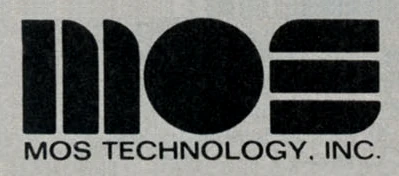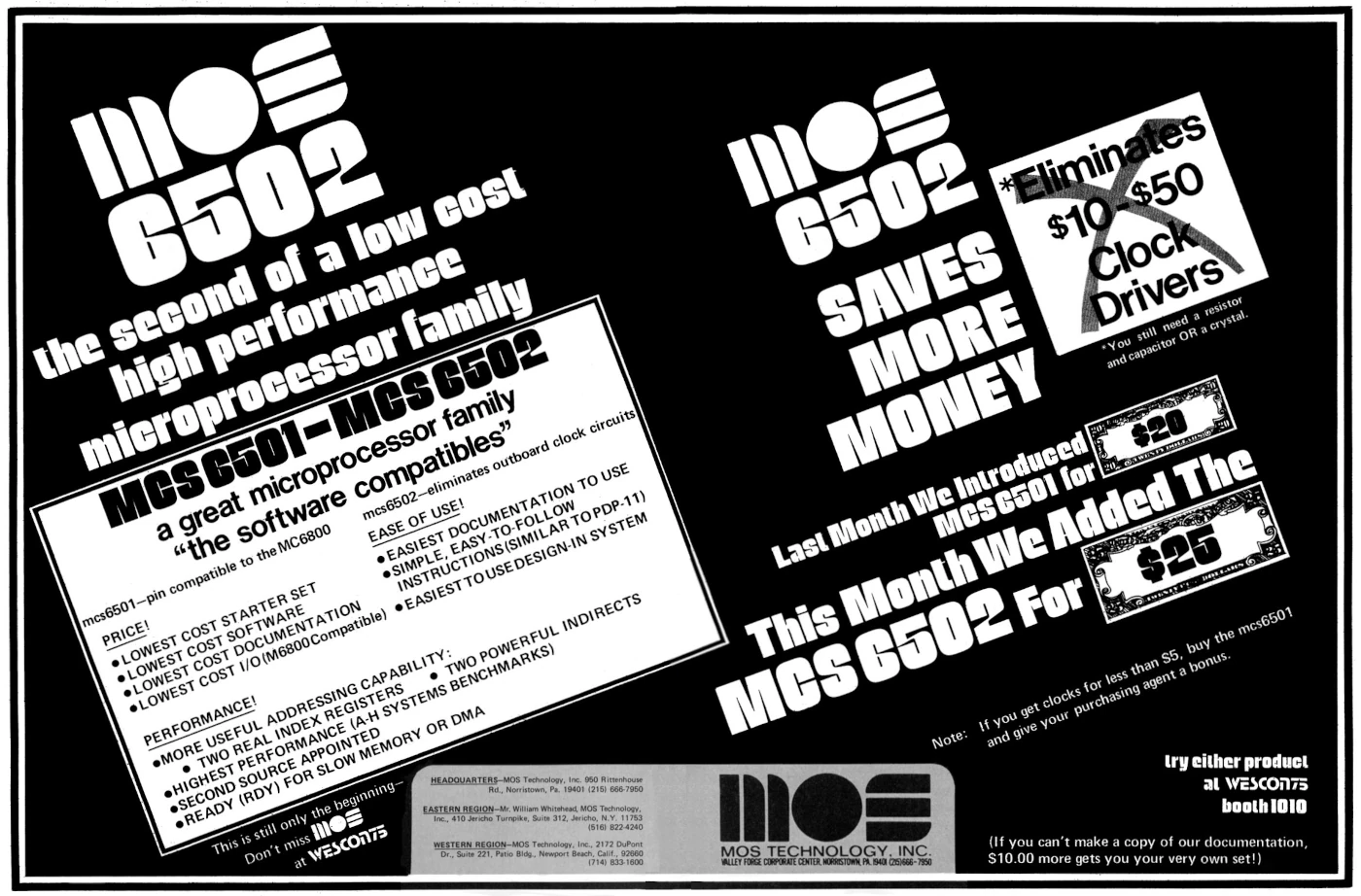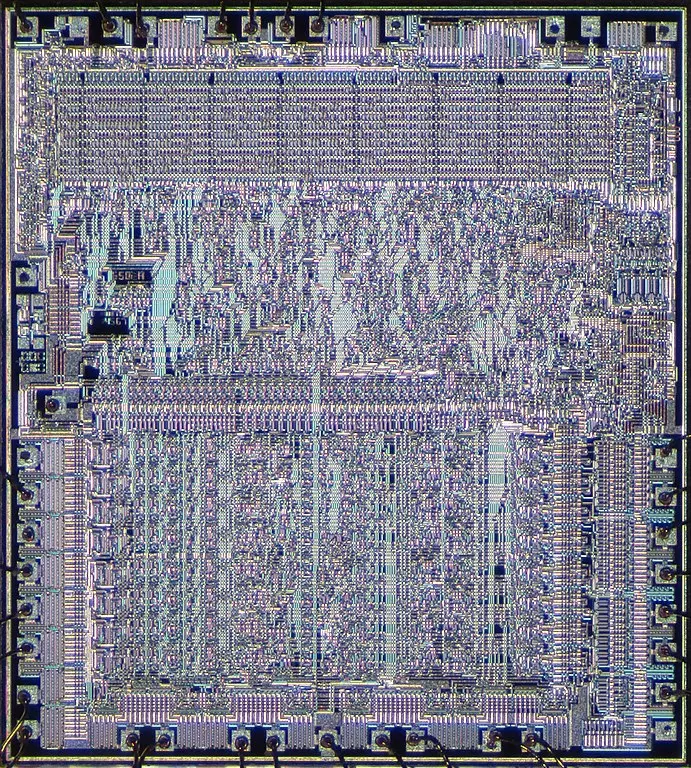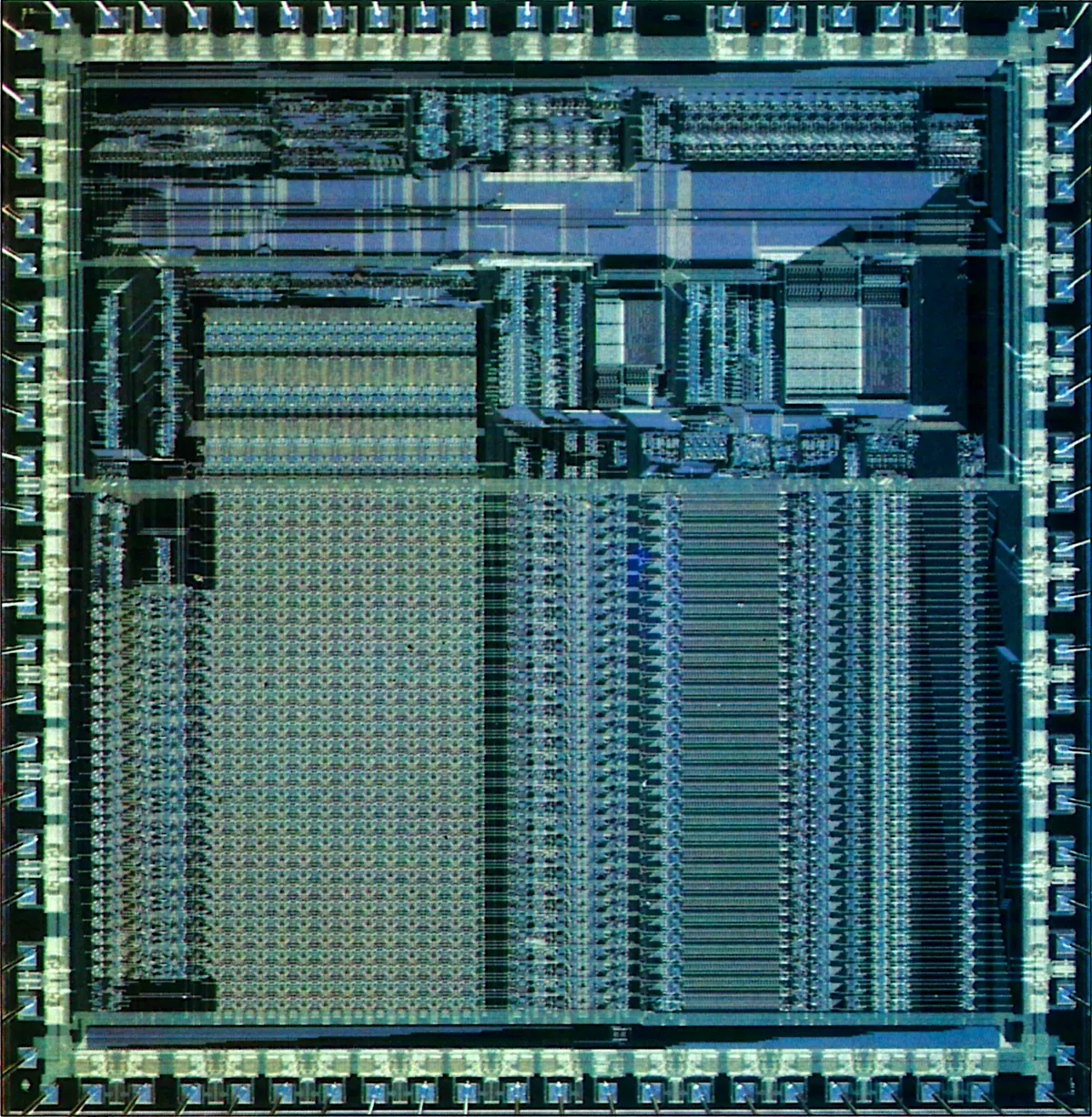
MOS Technology Advert - September 1975
From IEEE Computer

MOS Technology
The image above is adapted from a Wikimedia public-domain source[1]
MOS Technology was founded in Valley Forge, Pennsylvania, in 1969 by three former employees of General Instrument.
It was set up in order to be a second-source provider of Texas Instruments' chips for electronic calculators, with the name MOS meaning Metal Oxide Semiconductor - a type of transistor fabrication process.
According to chip legend Chuck Peddle, the name should be pronounced as M. O. S. in order to differentiate it from the another well-known chip supplier, Mostek.
A couple of years after MOS was founded, Commodore - a company established in Canada in the late 1950s as a typewriter business - launched its first calculator, a re-badged Bowmar model.
Commodore quickly established itself in the calculator market in competition with companies like Hewlett-Packard and Texas Instruments, but then the latter started selling its own calculators for less than the cost it sold the parts for to other companies.
The ensuing "Calculator Wars" led to the collapse of several chip suppliers and calculator companies, including Bowmar - which insisted on keeping its machines selling for up to $500 whilst TI's were selling for $49[2] - but Commodore managed to survive, largely by switching focus to the European calculator market, where TI had much less of a presence. Even so, it had lost $4 million on $56 million sales in 1976.
MOS was also affected, but hung on partly by selling chips to Atari for its Pong video game.
Meanwhile, a team of designers who had been working on Motorola's 6800 - a CPU used in several early microcomputer systems such as Midwest Scientific Instruments' MSI 6800 and various SWTPC micros - left the company in 1975 because they had been prevented from working on a much cheaper follow up[3].
The team - which included 6800 co-designers Chuck Peddle and Bill Mensch - ended up finding a home at MOS Technology, where they quickly got to work on their new processor.
Two CPUs were developed as part of this 6500 line - the MCS6501, which was pin-compatible with the original Motorola 6800, and the MCS6502 which was not, although it was the same as the 6501 internally.
Motorola almost immediately sued MOS over what it saw as not just an infringement but a threat to its intellectual property, especially as there were by now eight ex-Motorola engineers working at MOS. As part of the eventual settlement the 6501 was canned.
When asked about it in a 2007 interview, Chuck Peddle said:
"We stopped producing the 6501 so none really made it to market in any numbers. We never intended anyone to buy it anyhow. It was an in-your-face to Motorola[4]."
However, the 6502 was allowed to continue, although as no customers were yet using it, MOS ended up having to create the KIM-1 single-board micro, with a small hexadecimal keyboard for input and a calculator display for output.
Also as part of the effort to promote the chips, MOS booked a stand at 1975's Western Electronics Show and Convention - as can be seen in the advert above.
When they got to the show, they were informed that exhibitors weren't allowed to sell products, so a room was hired in a nearby hotel with Chuck Peddle's wife selling chips from a couple of jars - one with 6501s and one with 6502s.

Die shot of a MOS Technology 6502 microprocessor revision A, by Pauli Rautakorpi CC BY 3.0MOS had discovered a way to improve its chip masking - the process of photographically reducing the hand-drawn table-sized layout of the chip until it was the size of an actual CPU - which meant more of the chips worked and so MOS could sell them for less than the competition.
However, failure rates were still in the order of 30% so all the chips in the bottom of the jars were those that didn't actually work. The trick worked though as it made it look like the chips were plentiful.
The KIM-1 became one of the most popular small/kit microcomputers, but by 1976, MOS's calculator supply market had collapsed, leading to financial problems - even though by now the 6502 was also starting to sell well, largely because at $25 it was - at least until the Z80 underwent a price cut - the cheapest CPU on the market by far.
Back at Commodore, the experience gained during the Calculator Wars was not lost on Commodore's CEO Jack Tramiel, who noted that it was TI's vertical integration which had allowed it to sell its calculators for much less than anyone else.
And so towards the end of 1976, Commodore ended up buying MOS Technology, on the understanding that Chuck Peddle and his team would be part of the deal. That gave Commodore the 6502 and the KIM-1, as well as a guaranteed supply of all the semiconductor chips it needed.
Accounts differ on what then triggered Commodore to create the PET - the world's first true personal computer - with one suggestion that it was Peddle who said to Tramiel that calculators were a dead end and that the company should move into microcomputers.
However, according to his book The Home Computer Wars, Commodore insider Michael Tomczyk wrote that when Peddle and Tramiel were discussing the 6502 after the acquisition of MOS, Tramiel was reported to have said:
"You know what you've got here? You've got the makings of the first low-cost personal computer!"
Either way, Peddle was given six months to produce a computer - with Commodore announcing it to the press towards the end of 1976.
He assembled a team which included Bill Seiler, John Feagans, one of Jack's sons - Leonard - and some engineers from Japan.
Prototype machines were shown in early 1977, with the actual computers - by now known as the PET, for Personal Electronic Transactor, or sometimes less favourably as Peddle's Ego Trip - being formally unveiled at CES in June 1977[5].
The 6502 and its derivatives ended up being used in many microcomputers and video games of the day, including the VIC-20, Commodore 64, BBC Micro, Oric Atmos, Apple II and Atari's 2600/VCS. MOS also designed and built many of the support chips used in Commodore's computers, right up to the Amiga.

The ARM 1 - a spiritual ancestor of the 6502. From Practical Computing, October 1986
It was also the chip - thanks to its use at UK company Acorn - that inspired the architecture of the Acorn RISC Machine, or ARM processor, now used in countless millions of smartphones.
This was in part because, despite being a CISC or Complex Instruction Set Computing chip, many of the 6502's instructions ran in a single clock cycle - one of the defining features of RISC chips - often making it faster than contemporary processors with several times the nominal clock speed, such as the Z80.
Sophie Wilson - one of the designers of Acorn's BBC Micro, creator of the original ARM instruction set and described by her peers as "probably the world's best 6502 programmer" - was said to have designed the ARM accordingly to "suit herself"[6]
Date created: 15 October 2024
Last updated: 07 October 2025
Hint: use left and right cursor keys to navigate between adverts.
Sources
Text and otherwise-uncredited photos © nosher.net 2025. Dollar/GBP conversions, where used, assume $1.50 to £1. "Now" prices are calculated dynamically using average RPI per year.